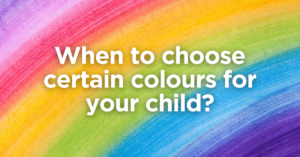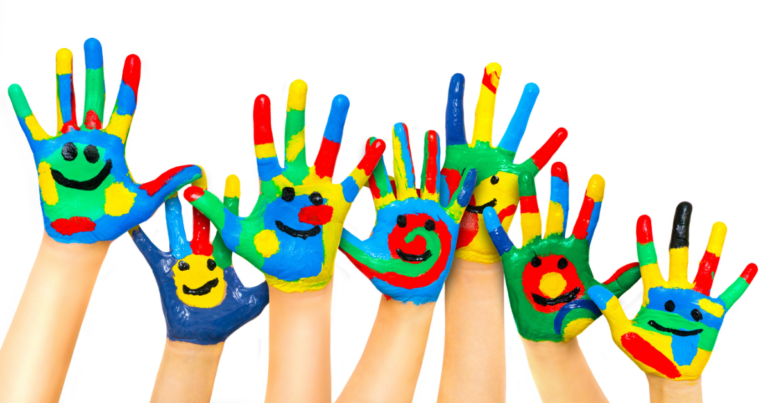Toddlers are demanding in that they want anything they want whenever they want it. Have you ever tried to say “no” to a toddler when they insisted on wearing their favourite outfit more than once? Was your child wearing an outfit that was head to toe brilliant orange, which you know is their favourite colour?
As adults, we can make judgments that are rationalised based on what we know to be best for us, but toddlers live in a world of their own where they make the rules for the time being while they are learning about the rules that adults live by. This also relates to the psychological framework behind colour theory.
Why do children develop so emotionally connected to certain colours? Colours are like different types of food for children. According to the theory of colour, every child is drawn to the colours that they require emotionally at the present time. Sometimes a certain colour can make a youngster “feel better,” whether it soothes them or just makes them feel more at ease.
How Your Toddler’s Favourite Colour Can Mean More to Them.
Additionally, colours can have representational or symbolic meanings, for instance, the colour pink and the colour green are most closely associated with the symbol of love, which is a heart. Therefore, a child who is preoccupied with love might only want to wear her pink princess dress when she is in kindergarten, but by the time she is in the third grade when she is more interested in unicorns, fairies, and other mystical objects, she might have shifted her favourite colour to purple.
Even adults are capable of shifting their colour preferences over the course of their lives. It’s possible that your toddler’s preference for a given colour will shift over time, even if it appears like they’re permanently attached to it. In the meanwhile, here is a handy chart that will give you a little bit of insight into what your toddler’s preferred colour says about them at that particular time.

Naturally outgoing and energetic, they will be motivated to succeed and will take pleasure in life. They are resolute in their pursuit of success and are taking a great deal of decisive action to do so. They have a flair for the creative and original, and they like to get things done with courage and determination. If they have too much red in their environment, it could suggest that they act hastily, become impulsive, and competitive; therefore, you should think about introducing some balance colours into their world, particularly the soothing colour blue.

It’s possible that this child is quite self-reliant, possesses calm confidence, and has good communication abilities. They have a practical and caring outlook on life, and they enjoy having a sense that they are supported in the situation they are in. People gravitate toward them as friends because of their reliability and loyalty, and they are frequently sought out for guidance and comfort. This child’s disposition could use some help, so try brightening things up with the colour yellow, which is both energising and uplifting. An excessive amount of blue could signify being overly possessive at times or feeling down in the dumps.

A kind-hearted and generous child who is always willing to help others. They value harmony and equilibrium in their lives and will work hard to achieve these qualities in all aspects of their lives, most notably in the connections they maintain with their friends and family. They have an open and honest outlook on life, and while they like a good debate, they are unwavering in their commitment to their own truth. Green is a zone of harmony, but if there is too much of it, it may be balanced out by adding some red, which will help fire up energy and assist in the implementation of plans moving ahead.

A person who is friendly, generous, and eager to satisfy others. They have a deep passion for helping others and giving. Possibly sensitive and enamoured with the process of creating lovely things. If it’s the brighter pinks that they’re drawn to, then they’ll exhibit an independent spirit and have a good time having fun. Wearing green, which evokes a sense of power and harmony, is a natural way to counteract the effect of wearing too much pink, which can lead to increased reliance on other people.

Perhaps reserved and quiet by nature, sensitive and kind, and endowed with a remarkable creative and original charisma. This child’s thinking may be particularly imaginative, and as they are likely to be constantly on the lookout for motivation, it is likely that they will take pleasure in discovering new channels of self-expression, particularly in the realms of culture and the arts. Bring harmony to the colour scheme by balancing purple with magenta or other shades of pink that work well together. Alternately, if necessary, you might introduce some orange into the mix to stimulate more social engagement.

A child with a kind and friendly disposition, who is full of life and eager to have fun. Positive in general, and eager to experience new things and accept challenges! Because of their naturally outgoing nature, they are likely to have a large circle of friends and an active social life. Because orange is such a bright colour, exposing your child to an excessive amount of it may cause them to enter the hyperactive zone. Combine with colours that are relaxing, such as blues and browns.

Naturally upbeat and always trying to find the silver lining in every situation. Probably quick-thinking and creative, with an original and inventive mind as well as an inventive spirit. A child who is naturally inquisitive and enjoys testing both themselves and those around them. A child may have trouble falling or staying asleep and find it difficult to relax if they are exposed to an excessive amount of the colour yellow. Add some purple to the mixture so that the active features of yellow may be calmed and so that it can also help with effective mediation.

Children who are drawn to the colour black have a personality that is mysterious and alluring, and they are strong-willed and motivated to achieve their goals in life. They are ferocious in their approach and don’t shy away from taking a bold step to win a race. They adhere to the idea that classic elegance and sophistication are desirable qualities that will never go out of style.

When to choose certain colours for your child
You may take it a step further and actively nurture your child through colour, in addition to examining what your child’s favourite colour indicates about them and what that colour may reveal about you.
- Pick RED to assist your child in becoming motivated and energised to start a new activity or pastime.
- Pick the colour PINK when you want to foster a sense of playfulness among family and friends and if additional nurturing is required.
- Pick ORANGE if you want your child to feel more at ease when meeting new people and making new friends.
- Pick YELLOW if you want to have more fun and engage in more cognitively inventive activities.
- Pick GREEN option if you want your child to have a more fruitful working experience (a light shade is best).
- Pick BLUE when you are going to be under a lot of pressure, such as for a test or an interview (particularly a shade of turquoise).
- Pick PURPLE when engaging in creative activities such as painting, drawing, or other similar activities.
- Pick NEUTRAL colours such as black, grey, brown, and white/cream: In order to provide a “grounding” and a more conservative balance to the “colours,” they should be employed in the proper amounts as necessary.







